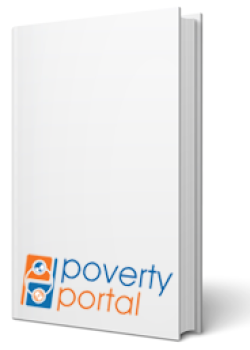Mainstreaming Gender in Conflict Analysis
Issues and Recommendations
Author : Anderlini, S.N.
Publisher: The World Bank
Place of Publish: U.S.A., Washington D.C.
Year: 2006
Page Numbers: 25
Series: P No 33
Acc. No: 42-S
Class No: 303.66
Category: Soft Documents
Subjects: Conflict Resolution/War and Peace
Type of Resource: Pdf
Languages: English
This report was commissioned by the CPR Unit in an effort to improve the gender sensitivity of the Bank's
Conflict Analysis Framework (CAF). It raises a number of issues and offers specific recommendations on ways to adapt the existing conflict framework and its indicators to better reflect the fact that conflict affects women and men
differently. The report also includes a number of links where additional information and resources on gender can be found and should be consulted as part of a conflict analysis process. Although the goal of conflict analysis is to enhance the sensitivity to conflict in the operations of development agencies such as the World Bank, existing frameworks across agencies that use them focus too much attention on the causes of conflict at the expense of the drivers of peace–i.e., those factors or social dynamics that may be acting to strengthen a community's resilience to conflict. Most conflict assessment frameworks either neglect or include only cursory treatment of gender issues.
Perhaps more importantly, while conflict analysis frameworks tend to provide a macro-level strategic assessment of the drivers of conflict, the inclusion of gendered perspectives provides a more ‘peoplecentered' approach, and stands a better chance of allowing analysts to explore the drivers of peace. Without a gender lens, the analysis can lead to a
skewed understanding of the situation under study, and lead to overlooking critical elements in society that are withstanding or resisting conflict. At the same time, there is still very limited understanding of the impact of conflict on men and their capacities to adapt to changes in socio-economic and political conditions. Gender variables are missing in most frameworks. This is partly the result of (i) a general tendency to conflate gender with women, (ii) insufficient data and information on the ‘gendered' impact of the development, conflict and poverty nexus, and (iii) the fact that when and if gender is addressed, it is typically covered under social issues or indicators, rather than mainstreaming gender throughout the analysis. A desk review of eight conflict analysis frameworks and a secondary review of three additional frameworks show that the majority makes some mention of women and/or gender-related issues, but none devote sufficient space to the issues. Users are generally advised to take note of particular gender issues but there is rarely any guidance on how this could be done or potential impacts, both on conflict and on peace. In some agencies, there is recognition of the importance of gender in this type of analysis, but there are constraints in terms of either the availability of gender specialists, or gender groups within agencies tend to marginalized, making gender mainstreaming difficult. The CAF itself can benefit from more systematic integration of gender variables into its current structure. Certainly the collation of more gender disaggregated data and analysis of this information would have enormous benefit. The greater challenge, however, is ensuring that analysts using the tool are themselves aware of and recognize the significance of gender issues to conflict and programming for poverty reduction across all issues. This can be done through, first, a combination of short term training or workshop sessions as they prepare to use the framework, as well as through exposure to sample studies or examples of where and how gender matters to governance, security, economic development and social issues. Second, awareness needs to be matched with the ability to reflect on, analyze and link gender indicators into the broader picture being developed. Too often, there is ad hoc mention of violence against women, or youth unemployment, but insufficient attention is given to understanding the impacts or the gendered nature of the issues and variables. Third, beyond awareness and analysis, teams need exposure to possible opportunities for alleviating the situation, in part by identifying existing efforts at mitigating conflict and poverty in their specific case, or perhaps by drawing on experiences elsewhere. The report includes a number of recommendations on ways to gender sensitize the CAF, including: methodology, framework, variables, staff training, ToRs for consultants and partners, contacts with counterpart governments, stakeholders and consultations, report structure, documentation, and piloting of a gender sensitized CAF. Appendices include a discussion of armed conflict and the feminization of poverty, details of the desk review of conflict analysis frameworks utilized by other agencies, and suggestions of additional indicators to consider for the different categories of variables included in the CAF.

